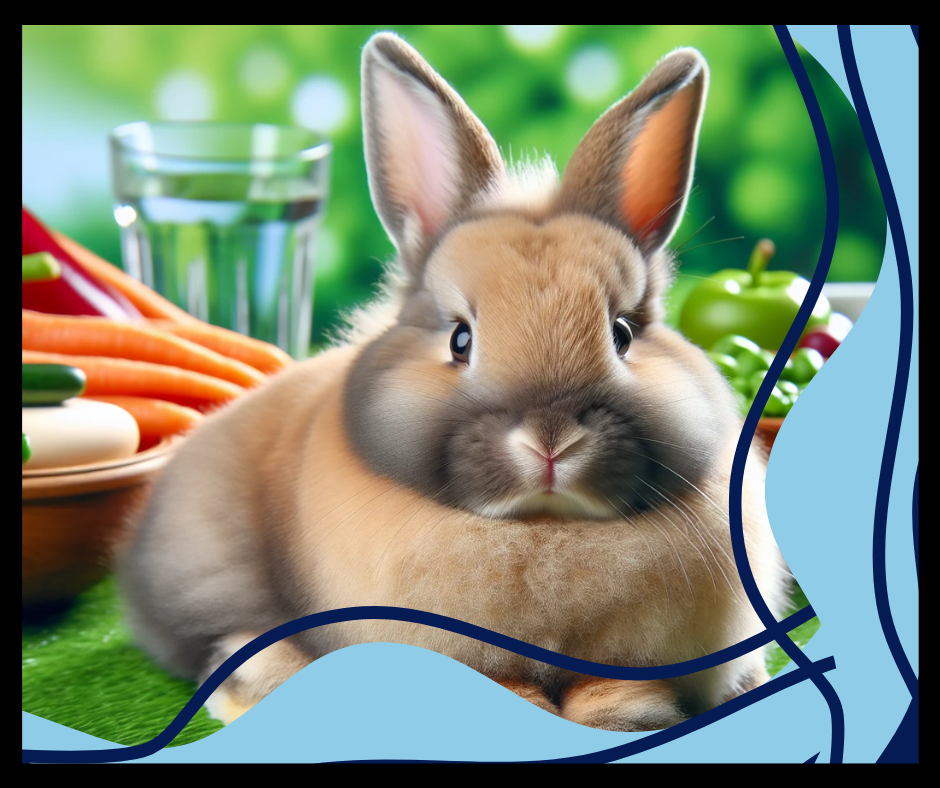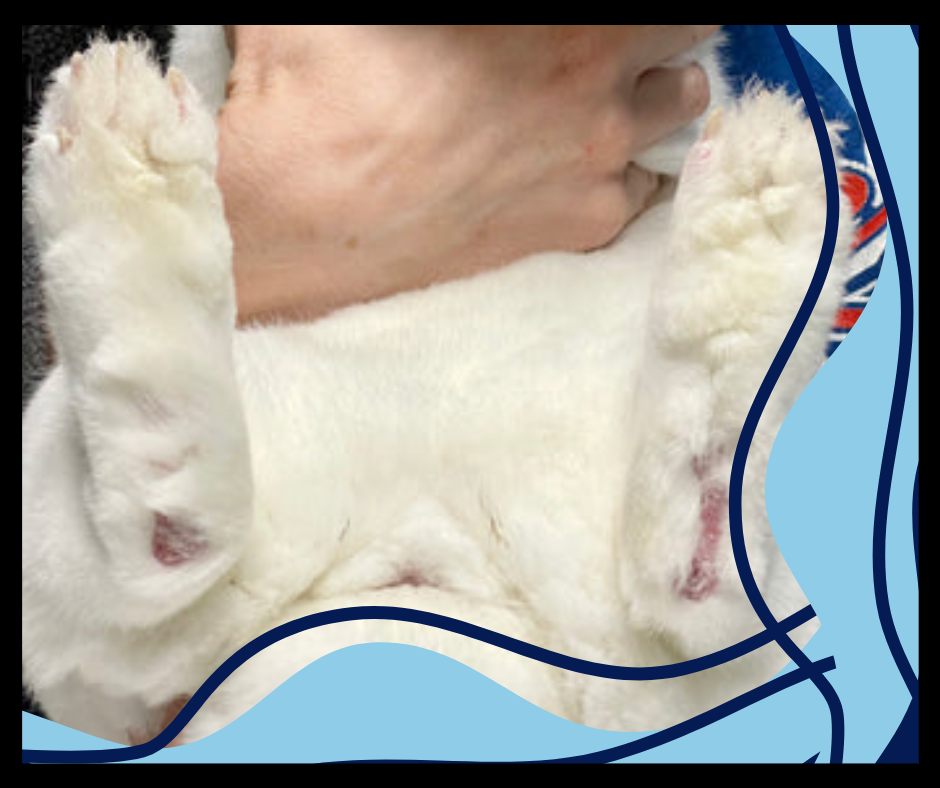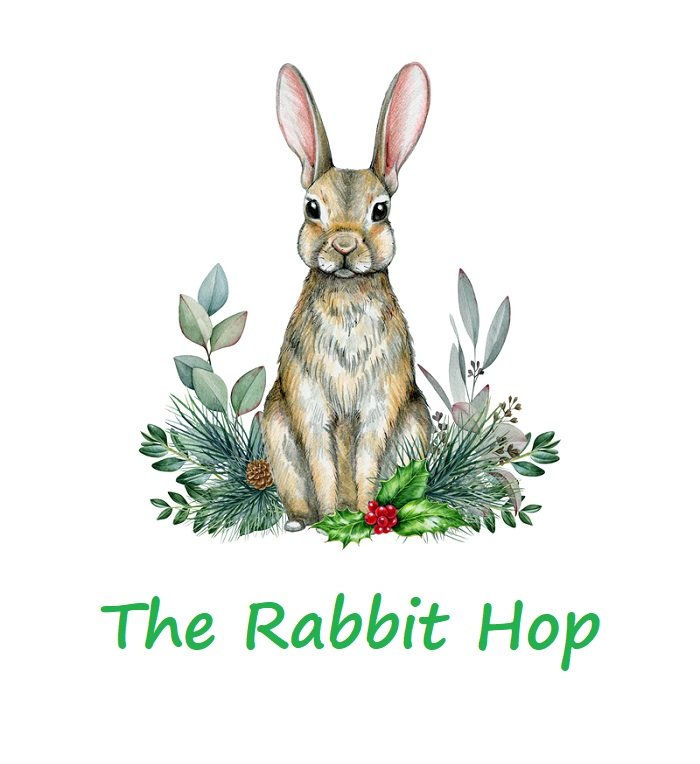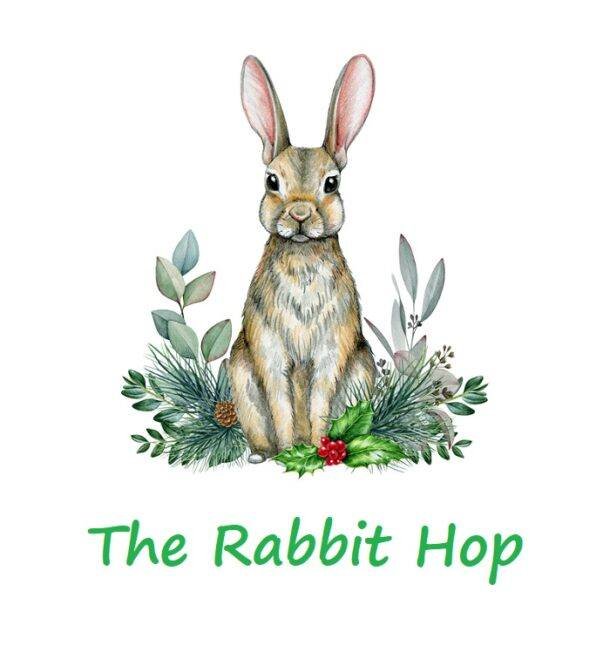Do you know that a simple issue like rabbit hock sores can cause significant discomfort and pain to your beloved rabbit? It’s essential to understand the causes, implications, and effective solutions for rabbit hock sores to ensure the well-being of your fluffy companion. This blog post will guide you through identifying, preventing, and managing it, helping you keep those cute feet healthy and pain-free.
Key Takeaways
-
Early detection and treatment, proper medical attention, hygienic living space, and post-treatment care are essential for preventing hock sores in rabbits.
-
Various factors such as improper flooring, weight issues, genetic predispositions, or prolonged inactivity can lead to sore hocks. Preventive measures like a balanced diet & regular exercise should be taken.
-
Professional veterinary care is necessary for severe cases of hock sores, while long-term management involves environmental adjustments & ongoing monitoring.
Understanding Hock Sores in Rabbits

Hock sores, also known as pressure sores, occur in rabbits when there is a long-term disruption of their normal stance or locomotion. They can be caused by factors such as inadequate fur padding on the feet, humid bedding, trauma, arthritis, or advanced age. Preventing bacterial infections requires appropriate post-treatment care, a hygienic living space, and proper medical attention.
Not treating it can lead to severe complications, including infections that can spread to deeper tissues and throughout the body. This makes them increasingly difficult to treat. Early detection and treatment are necessary to prevent further complications and maintain your rabbit’s health and comfort.
Identifying Hock Sores
Promptly addressing the issue of hock sores in rabbits requires their early recognition. Rabbits may exhibit redness, hair loss, or inflammation. Hair loss can be due to various reasons, including shed rabbit wool, which may leave the rabbit’s feet unprotected. Knowing the typical appearance and texture of a rabbit’s feet, including normal fur growth, can help you spot any changes that may suggest a problem.
If you are uncertain whether your rabbit has this condition, consult a veterinarian for a diagnosis and receive advice on the appropriate treatment, including wrapping rabbit feet for protection.
Stages of Severity
Hock sores can be classified from Grade I to Grade V, and indoor rabbits may be more prone to hock sores due to the type of flooring they are exposed to. Rex rabbits, for example, are more susceptible to it due to the even length of their guard hair and undercoat. This makes them unable to absorb impact and friction.
Neglecting to treat sore hocks in rabbits may lead to severe issues, including bone infections. The potential for infection of the skin and bones of the feet is a risk associated with it, especially in nervous rabbits, who may be more prone to injury.
Early intervention and proper care can prevent complications and promote healing from a bacterial infection.
The Culprits Behind Sore Hocks

There are various factors that contribute to the development of sore hocks in rabbits, such as improper flooring, weight issues, and genetic predispositions related to rabbit fur. Understanding the causes of this condition can help rabbit owners address potential risk factors, including obesity, lack of exercise, and prolonged inactivity. Keep in mind that long nails in rabbits can cause an uneven weight distribution across the back of the foot, which can result in sore hocks.
Comprehension of these factors will assist you in making decisions that prevent this in your rabbit, ensuring their comfort and overall health. Let’s explore these culprits in more detail.
Flooring Faux Pas
One of the significant factors contributing to hock sores in rabbits is improper flooring. Floorings that are abrasive or irritating, such as low pile and abrasive rugs/carpets, jute rugs, or wet flooring from urine or feces, may lead to sore hocks in rabbits. A smooth, non-abrasive fabric, such as waterproof bed pads made of cotton, is recommended for rabbits with sore hocks.
Providing your rabbit with suitable flooring will help reduce the risk of this condition and maintain healthy feet. Ensure the flooring is soft and solid, as wire flooring can cause discomfort and pressure on your rabbit’s feet, leading to hock sores.
Weighty Issues
Weight issues, such as obesity, can put additional strain on joints, resulting in sore hocks in rabbits. Obesity can lead to increased pressure on the feet of rabbits, which can result in hock sores. Keeping your rabbit at a healthy weight is key to preventing this condition.
A balanced diet and regular exercise are essential in ensuring your rabbit maintains a healthy weight and avoids obesity-related health issues including it. Monitoring your rabbit’s weight and adjusting their diet accordingly can help prevent this condition and promote overall health.
Genetic Predispositions
While genetics do not directly affect the occurrence of hock sores in rabbits, certain factors like rabbit fur and breed can contribute to its development. Larger breeds of rabbits, such as Rex, Flemish Giant, and Checkered Giant, may be genetically predisposed to hock sores. The thickness and quality of the fur on the rabbit’s feet can also be genetically influenced, leading to its development.
Awareness of these genetic factors will enable you to take proactive steps to prevent hock sores in rabbits more susceptible to their breed or fur type.
Preventive Measures for Healthy Rabbit Feet

Now that we’ve explored the causes of hock sores in rabbits, it’s time to focus on preventive measures to maintain healthy feet and avoid hock sores. Here are some tips:
-
Maintain optimal living conditions for your rabbit
-
Provide a balanced diet
-
Encourage regular exercise
-
Conduct routine foot checks
Following these preventive measures can help your rabbit’s cute feet stay unprotected and their foot fur healthy and free from pain.
Let’s discuss these preventive measures in more detail and learn how to implement them to ensure your rabbit’s well-being.
Optimal Living Conditions
Providing appropriate flooring and clean bedding for your rabbit is crucial in preventing hock sores. Here are some options to consider:
-
Soft and solid flooring without wire, as it reduces pressure on your rabbit’s feet
-
A soft, absorbent resting surface such as cotton toweling or artificial fleece
-
Deep pile carpet, duvets, or rugs/blankets/pads made of smooth, non-abrasive fabric
These choices will help ensure your rabbit’s comfort and reduce the risk of hock sores.
Maintaining a clean and hygienic living environment for your rabbit is vital in preventing this condition. Changing the bedding regularly and maintaining a clean living space can help prevent infections and keep your rabbit comfortable and healthy.
Diet and Exercise
A balanced diet for a rabbit to prevent hock sores should primarily consist of grass hay, which should be provided daily in ample amounts. Additionally, a small quantity of high-quality pellets and a few rabbit-safe vegetables should be included. Monitoring your rabbit’s weight and adjusting their diet accordingly can prevent obesity and hock sores.
Allowing your rabbit ample space for movement and physical activity plays a key role in keeping their feet healthy and in preventing this condition. Regular exercise can help maintain a healthy weight and contribute to overall health, reducing the risk of hock sores.
Regular Foot Checks
Routinely inspecting your rabbit’s feet can help detect potential problems early, enabling timely treatment and avoiding the formation of hock sores. Checking your rabbit’s feet for signs of redness, hair loss, or inflammation can help you identify any issues before they become severe, making it essential to pay attention to your rabbit’s feet health and consider the luck of having a rabbit’s foot.
If you notice any signs of hock sores during your foot check, consult a veterinarian for a proper diagnosis and treatment plan. Adhering to a veterinarian’s recommendations and continuously monitoring your rabbit’s feet for signs of sore hocks can help avoid potential issues and ensure your rabbit remains healthy and pain-free.
First Aid for Sore Hocks

Despite our best efforts, hock sores may still occur in some cases. Administering first aid for sore hocks in rabbits can help alleviate pain, prevent infection, and promote healing. Being equipped with the knowledge and skills to provide first aid for your rabbit’s sore hocks can make a significant difference in their recovery and well-being.
Let’s explore effective first-aid techniques for treating hock sores and preventing complications.
Cleaning and Disinfecting
Properly cleaning and disinfecting hock sores is essential in promoting healing and preventing complications. Here’s how to do it:
-
Carefully clean the area around the sore with a mild antiseptic solution or saline solution. Use a clean cloth or cotton ball to remove any dirt or debris from the sore gently.
-
Apply a topical ointment or wound care product recommended by your veterinarian to facilitate healing and deter infection.
-
If the sore is open or displays signs of infection, consult a rabbit vet for additional treatment, which may include antibiotics.
Regular cleaning of rabbit hock sores, ideally on a daily basis, is necessary to prevent infections and promote healing. Ensuring your rabbit’s living environment is clean and sanitary can also aid in the healing process.
Bandaging Techniques
Effective bandaging techniques can protect and support your rabbit’s affected feet, reducing pressure on the hocks and promoting healing. VetWrap self-adhesive bandages and Liquid Bandage are recommended for rabbits with sore hocks. To securely bandage a rabbit’s foot, follow these steps:
-
Cut a strip of VetWrap self-adhesive bandage. Make it approximately nine inches long and two inches wide.
-
Shape the strip into an ‘H’ shape.
-
Place the rabbit’s foot in the center of the ‘H’ shape.
-
Gently wrap the bandage around the foot, making sure it is snug but not too tight.
-
Secure the bandage in place by overlapping the ends and pressing them together.
Monitor the bandage regularly to ensure it remains in place and does not cause any discomfort to the rabbit.
Professional Care for Severe Cases

Hock sores may sometimes become severe, necessitating professional care and intervention. Seeking veterinary care for severe cases of hock sores is crucial in ensuring your rabbit receives the appropriate diagnosis and treatment to alleviate pain and promote healing.
Let’s examine the role of veterinary care in managing severe cases of hock sores and the advanced treatments that may be necessary.
Veterinary Diagnosis
A veterinary diagnosis is essential in determining the severity of hock sores and identifying any underlying issues. Veterinarians may employ a combination of:
-
Physical examination
-
Ultrasound examination
-
Radiographs/x-rays
-
Bloodwork
to diagnose and ascertain the severity of hock sores in rabbits.
If you suspect your rabbit has sore hocks, visit your veterinarian for confirmation and advice. Keep your pet safe and get prompt medical attention. They will assess the severity of the condition and may suggest modifications to your rabbit’s living environment or diet to help prevent further damage to their feet.
Advanced Treatments
In severe cases of hock sores, advanced treatments such as medications and surgery may be necessary. Veterinarian-prescribed medications, such as pain relievers and systemic antibiotics if the wound is infected, may be used to treat severe hock sores in rabbits. Topical ointments like manuka honey can be used to reduce inflammation and infection.
In some cases, surgery may be recommended to provide a new skin flap to cover the ulcers or remove dead skin and tissue on the feet and hocks. Pain medication, antibiotics, or topical ointments could be used in the treatment.
Different strategies may be explored to alleviate discomfort associated with an injury. Daily wound care, cleaning, and bandaging may be necessary components of the treatment.
Long-Term Management of Hock Health
Proper long-term management of hock health in rabbits is necessary to prevent the recurrence of hock sores and maintain overall well-being. Environmental adjustments, regular foot checks, and ongoing monitoring can help ensure your rabbit’s feet remain healthy and pain-free.
Let’s explore the long-term management strategies for hock health in rabbits and the importance of adjusting care as needed.

Environmental Adjustments
Making necessary changes to your rabbit’s living environment can promote foot health and prevent hock sores. Providing soft, absorbent surfaces such as:
-
cotton toweling
-
artificial fleece
-
deep pile carpet
-
rugs/blankets/pads made of smooth, non-abrasive fabric
-
rubber mats
is recommended.
Maintaining a clean and sanitary living environment is also essential. Changing the bedding regularly and keeping the living space clean can help prevent infections and keep your rabbit comfortable and healthy.
Monitoring Progress
To maintain healthy feet and prevent hock sores, it’s necessary to monitor your rabbit’s progress regularly and adjust care as required. Here are some steps you can take:
-
Conduct daily foot checks and observe for any signs of inflammation, hair loss, or redness.
-
Identify issues before they worsen.
-
Consult your veterinarian if you notice any signs of hock sores.
-
Follow their recommendations for adjustments in care and treatment.
Video Credit: @urbanhomesteadmama_
Summary
Understanding and addressing the causes of hock sores in rabbits is essential for maintaining their overall well-being. Implementing preventive measures, providing first aid, seeking professional care when necessary, and managing long-term hock health can help ensure your rabbit’s feet remain healthy and pain-free. By taking these steps, you can give your fluffy companion the best possible care and enjoy a happy, comfortable life together.
Frequently Asked Questions
How do you treat sore hocks in rabbits?
Treat sore hocks in rabbits by using topical ointments to help protect the feet, ensuring the dressing is kept clean and dry, and possibly administering anti-inflammatories/pain relief. If the skin is broken or bleeding, see a vet ASAP, and be sure to wear gloves when treating wounds, as bacterial infections can be passed from your rabbit to you.
What breed is prone to sore hocks?
Rex rabbits are particularly prone to sore hock problems due to their fine fur, which does not protect against friction. This includes both Rex and Mini Rex. Mixes that include the Rex breeds may also develop these pressure sores.
What are the early signs of hock sores in rabbits?
Early signs of hock sores in rabbits include redness, hair loss, and inflammation on the underside of the hocks.
How can I prevent hock sores in my rabbit?
Regular foot checks, a balanced diet, a clean living environment, and appropriate flooring can help prevent hock sores in your rabbit.
What type of flooring is best for rabbits to prevent hock sores?
Soft, absorbent surfaces such as cotton toweling, artificial fleece, deep pile carpet, or smooth, non-abrasive fabric rugs/blankets/pads are ideal for rabbits to prevent hock sores.
Learn Rabbit Care, Tips, and Tricks!
Learn more about caring for your bunny with us. We’ve got everything from rabbit hutches to essential care tips.
For more information on rabbit care, visit our website: therabbithop.com.
Join our community and become a bunny care expert!



